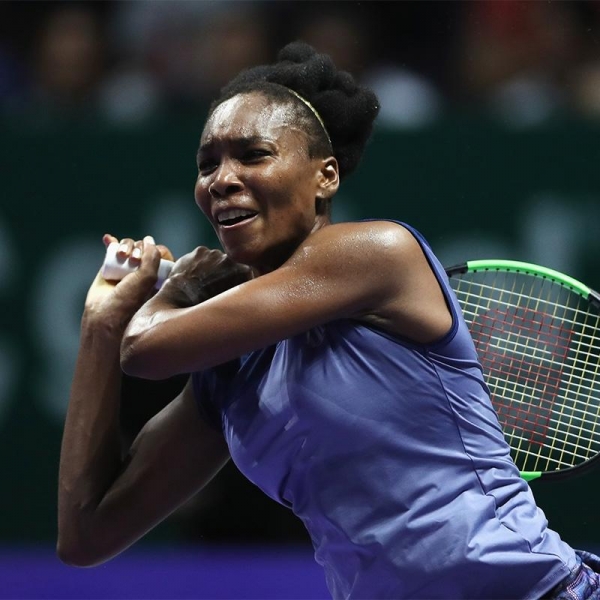At the 2017 Australian Open, all four singles finalists were aged 30 or over. Both of the eventual champions were 35 years old; Roger Federer beat Rafael Nadal to become the oldest men’s Grand Slam champion in his own lifetime, while Serena Williams became the oldest women’s Grand Slam champion of the Open era after beating 36-year-old elder sister Venus.
The trend of thirtysomethings thriving in today’s tennis landscape doesn’t end with Roger, Rafa, and the Williams sisters. I’ve looked at each of the Australian Open draws from 1990 to the present, breaking down the players appearing in the first round into four age categories: teenagers, 20-23, 24-29 and 30-plus – and in both the men’s and women’s game, the proportion of players aged 30 and over is on the rise.
The men’s data is particularly interesting. From 2011, the number of players aged 30 and above began to skyrocket, a trend that looks set to continue this year. As you can see, owing to that trend we’re expecting 43% of the men’s draw to be made up of 30-plus players: the highest for that age group in nearly 30 years and the first time 30-plus players will represent the largest proportion of players in the draw.
One thing to note: the current 2018 numbers are based on this year’s entry list prior to the qualifying draw. But among the players already guaranteed a place at Australian Open 2018, 46 are in their thirties – and that means players in other age groups are missing out.
Which groups are being excluded? In the men’s game, it is the 24-29-year-olds, which is often referred to as the lost generation – though perhaps the overshadowed generation is more apt.
With the women’s draw, while the rise in the number of over-30s is less dramatic, there is still an uptick in the older age group. And, like the men, we are expecting a higher percentage of 30-plus players this year, with 17.3% of the women’s entry list being thirtysomethings. But what’s interesting is that, in contrast to the men’s game, the 24-29-year-old representation isn’t lost but is trending up, while the number of teenagers managing to reach the main draw in Melbourne has gradually decreased over the years.
So while thirtysomethings are grabbing more spots in both the men’s and women’s draws, how this trend has evolved and affected the younger age groups differs on either side of the gender divide. Some of this may be explained by the general observation that women tend to peak younger than men. The best-of-three versus best-of-five format may be another factor.
Over time, tennis has become more physically demanding – something the men experience over five sets, the women over three. To succeed at the majors, endurance and stamina have become an increasingly necessary ingredient as baseline play has come to dominate the game. That tends to favour the older more experienced player rather than a player in their teens or early twenties.
Think about the difference in peak performance ages of a sprinter and a middle-distance runner. Sprinters tend to peak at a younger age than athletes covering longer distances – much like the difference between athletes engaged in a faster best-of-three format versus those playing best-of-five.
How these first round age trends will play out over the two weeks of the Australian Open is another matter. We may return to this subject in the second week of the event, looking at the age dynamics there compared to previous years – that’s when it seems experience and stamina becomes critical, especially on the men’s side.
